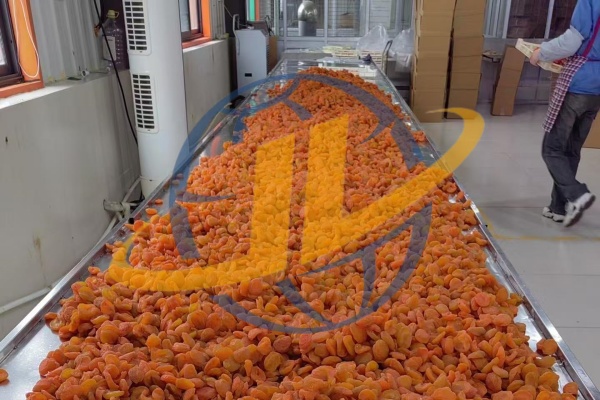Apricot Drying Process
Dried apricots are a nutrient-rich and uniquely flavored dried fruit. By applying a scientifically designed drying process, fresh apricots can retain their natural sweetness, vibrant color, and rich nutritional content. Below is the standardized drying process for dried apricots.

To maintain the bright color and natural flavor of apricots, the halved apricots typically undergo pre-treatment. The most common method is soaking the apricots in a light saltwater or citric acid solution for approximately 5 to 10 minutes. This step effectively prevents oxidation and browning while locking in the natural sugars and nutrients of the fruit. After pre-treatment, the apricots are evenly spread on drying racks and placed in drying equipment for dehydration.
Drying is the core step in producing dried apricots. The temperature is usually controlled between 50°C and 60°C to ensure even moisture evaporation while avoiding high temperatures that could harden the fruit or cause nutrient loss. During the initial stage of drying, when humidity is high, strong airflow is used to accelerate the evaporation of surface moisture. In the later stages, humidity is gradually reduced, allowing the internal moisture to release slowly, preventing the surface from hardening while leaving the inside under-dried. The entire drying process typically lasts 12 to 18 hours, with adjustments made according to the size, thickness, and moisture content of the apricots. Once drying is complete, the apricots are naturally cooled to room temperature. After cooling, they are immediately vacuum-sealed or packed in moisture-proof packaging to extend their shelf life and maintain product quality.

